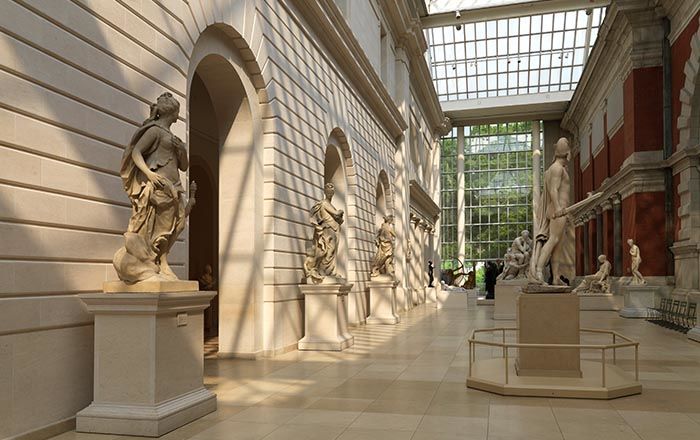Plaque with landscape
Not on view
This decorative plaque is one of a set of four depicting idealized landscapes, two of which incorporate classical elements in the style of Giovanni Paolo Panini. Each of these plaques was probably intended to be set into the lid of a japanned toilet box, made to hold cosmetics or other products that would have been used during the morning ritual of dressing. All four of these boxes would fit into a larger japanned casket, also decorated with an enamel plaque set into its lid.
Enameled objects like this one were intended to imitate the lustrous quality of porcelain at more affordable prices. By the middle of the eighteenth century, technological innovations had made it possible to roll copper, instead of the far costlier gold, into very thin sheets. Powdered glass mixed with minerals (to determine the opacity and color of the enamel) would then be applied onto the copper sheets and fired at high temperatures. A design—whether a famous portrait, generic pastoral scene, or floral motif— could be painted on by hand or copied from an engraving through the newly invented process of transfer printing. Many enameled objects combined both methods of decoration and would be refired after the application of each new layer or color.
This image cannot be enlarged, viewed at full screen, or downloaded.

